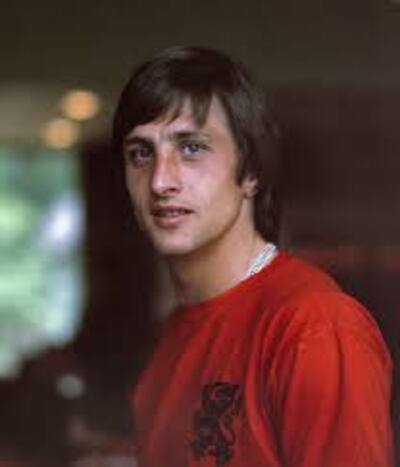Lionel Messi signed a two-year deal with Paris St-Germain in August 2021. Kuper's book explores the history of the Barcelona Football Club through three key figures - Cruyff, Pep Guardiola and Lionel Messi - who shaped Barcelona Football Club and modern football. (Image: Reuters)
Business schools around the world learned management methods drawing and redrawing on how Arsene Wenger's Arsenal scored beautiful goals that football fans everywhere would watch again and again. Many believe football clubs (FCs) are like giant corporations, off and on the field, creating formulae for success in tactics and strategy sessions. In his latest book, Barça: The Inside Story of the World's Greatest Football Club, Financial Times columnist Simon Kuper contests this view.
Kuper, the co-author of Soccernomics (2009), argues that companies can't win by adopting the methods of successful football clubs. "I don't believe a normal company can learn much from a great football club, because there is one unbridgeable difference: the outsized role of the talent in football," says Kuper in the beginning of his book written in the middle of the coronavirus pandemic.
 "In most companies," he says, "when a senior executive leaves, a new one comes in, and hardly anybody notices the difference. But top-class footballers who can function within the Barça system are almost irreplaceable," he adds, referring to the Barcelona FC. "The logic is that they, and not the directors, can end up running the club."
"In most companies," he says, "when a senior executive leaves, a new one comes in, and hardly anybody notices the difference. But top-class footballers who can function within the Barça system are almost irreplaceable," he adds, referring to the Barcelona FC. "The logic is that they, and not the directors, can end up running the club."
Founded in 1899, Barcelona FC today has many employees who have management and doctoral degrees. Without much European or global success for nearly a century, the Catalan club reversed its fortunes by embracing new ideas, brought by a Dutchman called Johan Cruyff, who first arrived at the club as a player in 1973. Kuper's book explores the history of the club through three key figures - Cruyff, Pep Guardiola and Lionel Messi - who shaped Barcelona FC and modern football.
In their last Spanish league match before footballers went into international break, Barcelona, which is in financial turmoil, were beaten by Atlético Madrid by two goals, scored and assisted by Luis Suarez, who was pushed out of Barça last summer. Barcelona, which saw Messi depart for Paris Saint-Germain this year, are ninth on the LaLiga table, beaten once and drawn thrice in seven matches. Last month, the club was beaten 3-0 by Bayern Munich and Benfica in their first two Champions League group matches.
Kuper, who has plenty to say about the decline and fall of Barcelona, begins the book by offering a socio-political history of the club built by Catalan merchants. The club is a symbol of Catalan society dominated by the merchant class, which controls Barça's boardroom. "Whereas Real Madrid under Florentino Pérez resembles an autocracy, Manchester United has come to operate like a corporation, and Manchester City like a family office, Barça is a democratically elected oligarchy," says the author.
It is into this bourgeoisie set-up that Cruyff, born in a working-class neighbourhood in Amsterdam, arrives from Ajax football club in 1973. His father ran a grocery store that supplied fruits and vegetables to Ajax. When his father died suddenly after a heart attack, Cruyff, then a 12-year-old, was forced to quit school while his mother cleaned Ajax's changing rooms to support the family. In 1964, Ajax gave the boy his first team debut at 17, bringing him under its new coach and former player Rinus Michels, who would later become the coach of Barcelona.
Cruyff soon changed the Italian defence-style of the '60s to a pressing, attacking game, laying the foundation for the Dutch 'total football'. Michels coached, but the young Cruyff ran the show on the pitch, changing plans and always shouting instructions to fellow players. In 1971, the little known club won the European Cup, and won it again next year, also bagging the Club World Cup. But when the Ajax players called a vote for a new captain to replace Cruyff, he left for Barcelona.
Rejoining his former Ajax coach Michels at Barcelona in 1973, Cruyff's perks at the new club included a private phone number. Kuper goes on to narrate how Cruyff became the original architect of Barcelona, first as a player between 1973 and 1979 and later as coach during 1988-96. Between 1981 and 1988, he played again and coached Ajax, reinventing 'total football' with the Cruyffian dogma that involved attack and midfield domination. He even brought opera singers to Ajax to teach the players how to breathe.
 Johan Cruyff.
Johan Cruyff.
Barça: The Inside Story of the World's Greatest Football Club details the important role played by the club's Masia academy that had pupils like the current Manchester City manager Guardiola and Messi. When Andrés Iniesta, a 12-year-old newcomer, felt homesick at the seminary-like academy, Carles Puyol, 18, and Victor Valdés, 14, volunteered as big brothers. Puyol, who later became the club captain, even gave Iniesta his mattress when he made the first team.
The book, which doesn't delve into Maradona's two seasons at Barcelona during 1982-84, and dismisses Ronaldinho as a "bad influence" at the club, elaborates on the domination of Guardiola and Messi, and the "Messi era" that begins from 2008. Messi, who arrived at the Masia academy as a 13-year-old, received funding from the club for his growth-hormone treatment and a 120,000-euro annual salary to move in his parents and siblings.
"Barça embarked on a deliberate project of pandering to one man," Kuper writes in the book, adding the club's deference to Messi went against football's traditions. No coach was allowed to get in his way. In his 15 years at Barcelona, Messi scored more than a goal or assist per game for eleven seasons, two more than Ronaldo.
"Before him (Messi), the club frequently existed in an eternal present where the next match was the next crisis. From 2005 until 2015, he made running Barça relatively easy," says the author.
The book, a captivating narrative of Barcelona's history as a top football club in the world, is a minefield of anecdotes, aphorisms and comments from top players, coaches and football executives. With his efficient use of archival material, primary and secondary sources, Kuper constructs a narrative style that matches another effective researcher from a different medium, the Oscar-winning filmmaker Asif Kapadia (
Senna,
Amy), whose last film was a documentary on Maradona. The author of
Football Against the Enemy, and
Ajax, the Dutch, the War: Football in Europe During the Second World War, adds another important work to sports literature.
Barça: The Inside Story of the World's Greatest Football Club is certain to inform, entertain and provoke fans of sports in general and football in particular, including the Barcelona faithfuls.




















 "In most companies," he says, "when a senior executive leaves, a new one comes in, and hardly anybody notices the difference. But top-class footballers who can function within the Barça system are almost irreplaceable," he adds, referring to the Barcelona FC. "The logic is that they, and not the directors, can end up running the club."
"In most companies," he says, "when a senior executive leaves, a new one comes in, and hardly anybody notices the difference. But top-class footballers who can function within the Barça system are almost irreplaceable," he adds, referring to the Barcelona FC. "The logic is that they, and not the directors, can end up running the club."














